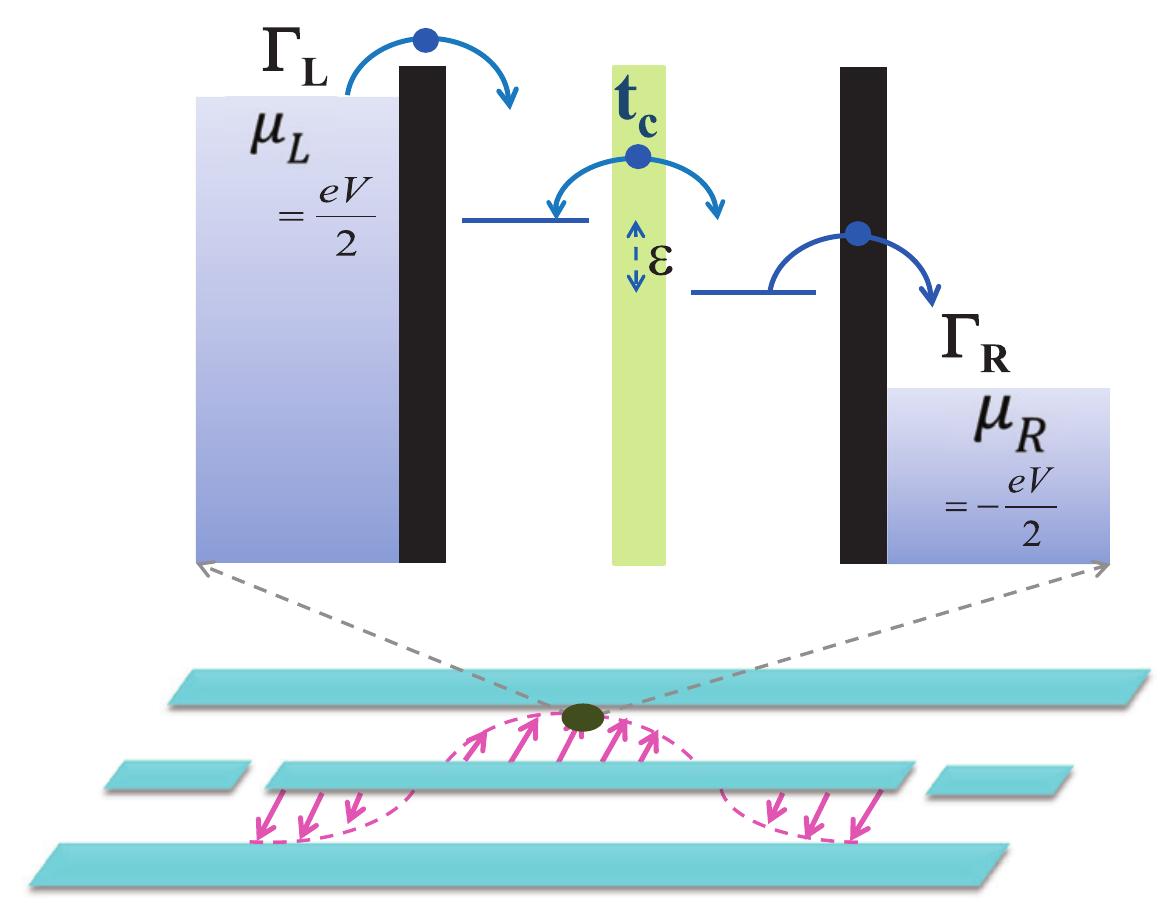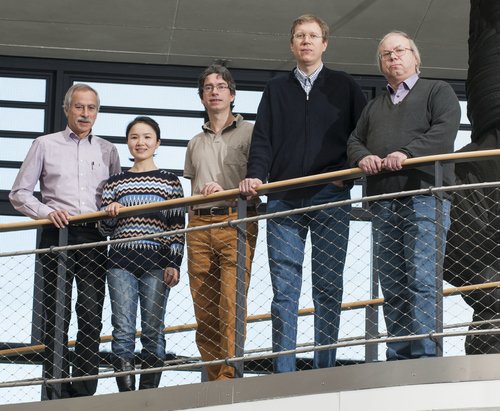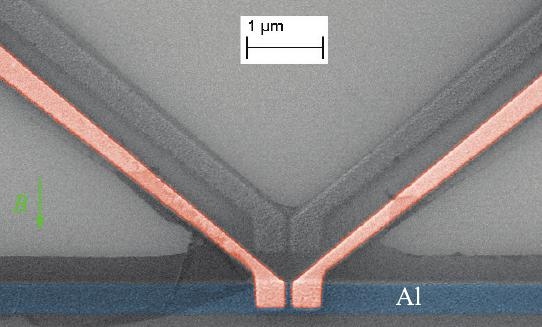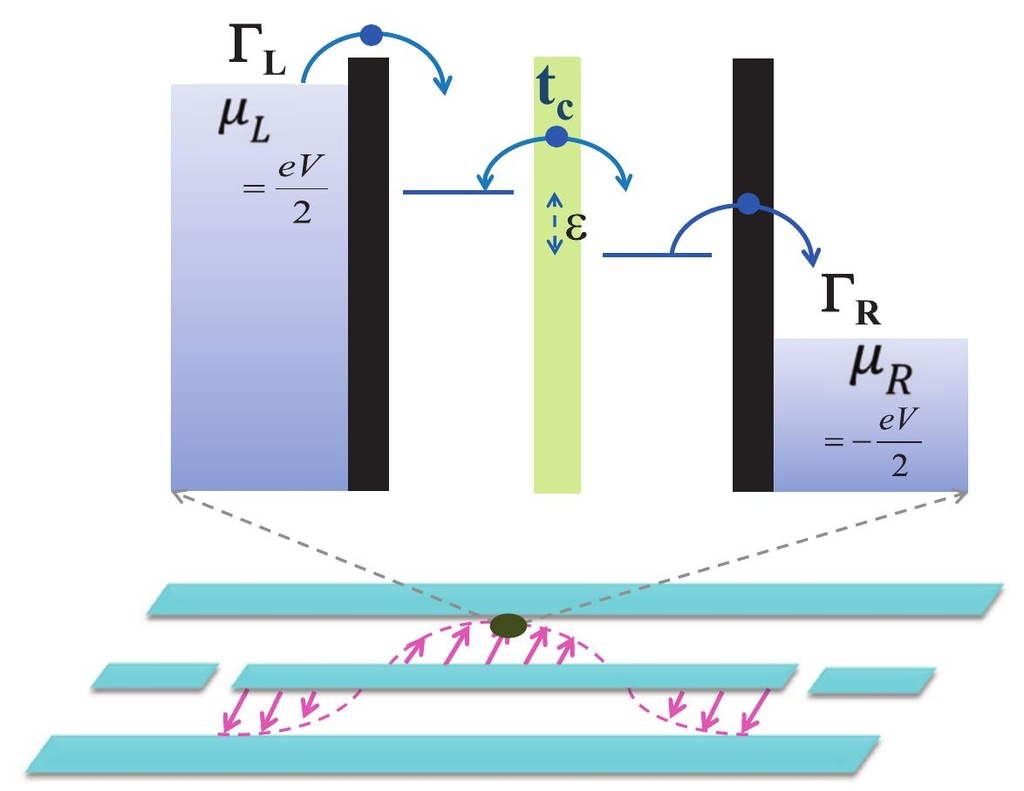

Quantum Engineering and Transport
Electron transport through quantum dot systems and molecules
In nanoscale quantum dots electronic interactions play a dominant role, leading, e.g. to the Coulomb blockade. We describe electron transport and current noise using various methods like diagrammatic perturbation theory, full counting statistics, or path integral techniques. Inelastic transport processes and dissipation of energy to the environment also plays an important role. Recently we focus on the interactions of electronic degrees of freedom with resonator modes, which can lead to lasing.
Transport through hybrid structures
In hybrid structures, materials of strongly differing (or even complementary) properties are brought together. An example is the combination of superconducting and ferromagnetic metals. Transport through such structures show phenomena that are so far poorly understood, e.g. non-local Andreev reflections, that we describe by Green function methods. Hybrid structures are particularly interesting for applications, as their integration with established (semiconductor) technologies is feasible.
Nanoscale and Biomolecular Simulation
The group of Prof. (apl.) Dr. Wolfgang Wenzel does extensive work on multiscale simulation of nanoscale systems and devices as well as biomolecular structures. For further information see http://int.kit.edu/nanosim

With our colleagues from experimental physics we study the nonlocal electrical transport in superconductor-normal metal hybrid structures.
PHYSICAL REVIEW B 88, 174509 (2013)
We study the noise properties of the transport current in the lasing regime of a double quantum dot-resonator circuit.
New J. Phys. 15, 025044 (2013)